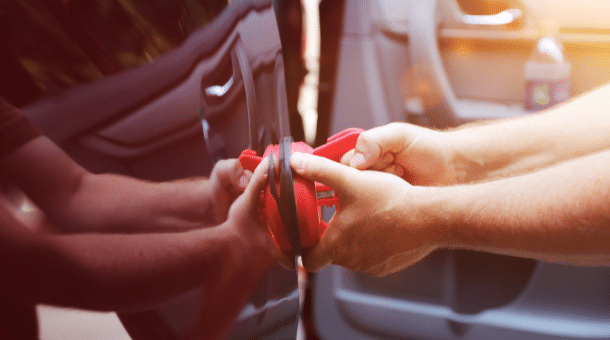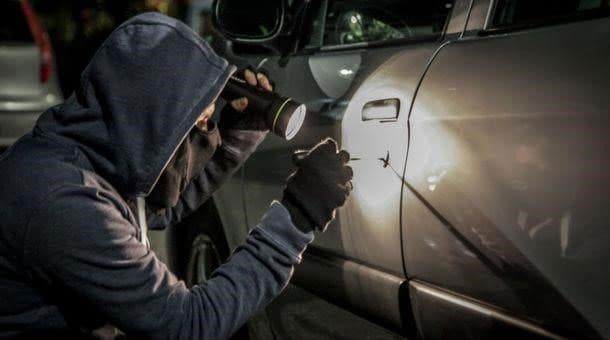This article will discuss How are Car Tested for Safety. Safety ratings of ANCAP are based on an international standard of independent crash tests and safety tests, including an array of physical crash tests and an evaluation of the safety equipment and features on board, and testing of the performance of active technologies for collision avoidance.
You must consider some aspects when you evaluate a car’s overall safety. These include how it responds in an emergency, how it safeguards its occupants in the event of a collision, and the ease of connecting a child’s car seat. When comparing cars, it is important to consider all the relevant factors, such as safety ratings and features.
How are Car Tested for Safety?
1: Crash testing
The widespread testing technique is a highly rigorous and costly than many realize. In contrast to the crash-testing videos in tv shows or films, Crash test dummies aren’t just human mannequins. Crash test Dummies are constructed from materials resembling human structure and physiology.
From having a spinal column made of rubber and metal pads to moving the arms and body as a human would be expected to do during an accident, the crash test dummies are designed to mimic the reactions and injuries of an actual human during an accident.
The dummies are available in various sizes, weights, and genders. The crash test dummies are accelerometers, load sensors, and motion sensors that gauge the force exerted on multiple body parts during a crash. These features aid manufacturers gather crash data to determine the damage’s severity during various impacts.
2: Government crash-test ratings
The National Highway Traffic Safety Administration (NHTSA) performs a complete frontal crash test, a rollover test, and a side impact. All tests are scored on a 5-star scale, with fewer stars representing the greater risk of injuries. You can find the scores of all crash-tested vehicles online by visiting.
The NHTSA’s frontal tests indicate how well safety belts and airbags safeguard the occupants from inevitable crashes. The frontal test forces vehicles against a solid barrier at 35 miles per hour.
It is a collision simulation of two identical cars moving at 35 miles per hour. The crash dummies equipped with instruments in the front and back seats document the forces they experience and score given to the driver and front-seat passenger.
The test for side-impact simulates an accident at an intersection using a 3-pound obstacle moving at 38.5 miles per hour into a stationary vehicle. The driver and the left rear (impacted left) passenger are given scores. Since 2011, NHTSA has increased its rating evaluation and introduced the side-pole test using various size models.
Both NHTSA along with the IIHS frontal crash test results are only comparable to cars that are in identical weight categories as the test vehicle. If the weights of cars are highly different, the results could be quite different.
3: Electronic stability control (ESC)
Consumer Reports auto experts strongly recommend electronic stability control, especially for SUVs. ESC can keep the vehicle in check and the path it is intended to take in a corner and keep it from skidding or sliding. When a car loses control, the system applies brakes on any or all wheels and cuts engine power to help keep the vehicle on track.
In the case of SUVs, stability control can prevent the vehicle from slipping into a situation that could result in an accident. Although the electronic stability control has dramatically improved emergency handling on the cars we’ve examined, it’s not a solution for unsafe vehicles. This system’s effectiveness depends on how it’s programmed and connected to the vehicle. It is also not able to overcome the physical laws.
Numerous studies of ESC have been conducted, and all have shown a significant reduction in deaths and accidents. The IIHS estimates that if all vehicles were equipped with ESC, this would save the lives of 10,000 people every year. The National Highway Traffic Safety Administration has now required ESC to be included in all new vehicles.
4: Test-driving on challenging roads
Crash testing is an insignificant but vital component in the safety procedure. Like crash tests, the real-world test of cars also needs to be conducted under real-world conditions.
Automobile manufacturers must ensure that their vehicles can withstand extreme weather conditions, such as heavy rain and bumpy roads.
There are several places for testing cars, including those in the Death Valley in the U.S.A. for testing heat, well-known as one of the most sweltering locations on Earth. In Germany, the Nurburgring Race Track in Germany is utilized by many people to gather data on speed and acceleration data.
The well-known Nurburgring racetrack is thought to be the most deadly race track. Manufacturers also travel to Alaska in winter to check its endurance in colder weather.
Fairbanks, Alaska, an extremely popular tourist destination in the summer, is also known for its freezing temperatures and heavy snowfalls in winter.
Apart from testing vehicles in extreme conditions that are actual manufacturers also test the overall functionality and performance of their cars by driving them on roads, just like all of us.
This could include tests for a couple of hours, days, or even weeks on the street to measure their vehicle’s performance. This can help determine a car’s basic acceleration capabilities, brake capabilities, and noise levels in a real-world scenario. Most of these cars are disguised to keep away the latest design the car company is launching.
5: Testing the smallest of car functions
You may have realized that crash tests and a car’s capability to navigate difficult roads aren’t the only aspects of car performance. As drivers typically, we overlook the functions of a vehicle until they cause an issue.
These function tests are as crucial as the huge test for weather and crash. These tests measure the level of comfort a driver can expect while driving. The functions that are tested include:
- The volume of sound that is emitted by an engine in the car
- Level of vibration at different speeds and gears
- It is easy to change gears
- The comfort of the seats
- Tires emit noise
- Ensure that the vehicle meets the most efficient standards for fuel efficiency.
- The car’s weight isn’t too heavy.
- Ensure that the proper distance is maintained between the bottom of the car
- The ease of pressing the accelerator and brake pedals
- It is easy to use the steering wheel
- Windscreen injury caused by driving
- The purpose of wipers
- The level of noise in the vehicle
- Performance of the air heating and cooling systems in the vehicle
- Wind noise level
- Wear and tear rate.
6: The expense of car safety tests
However, testing vehicles isn’t inexpensive. Have you ever wondered why there are just a few brands of cars that are well-known? It’s not because nobody would want to be competitive with the firms, but because it’s nearly impossible to raise funds and make any profits after the vehicle has been released.
Before this, it is necessary to have testing carried out, which typically costs manufacturers in the range of six-digit numbers. In addition, there is the expense of hiring technicians, engineers, and experts.
We’re not even getting started on the amount manufacturers are investing in new designs, including technology that allows for a smoother user experience. They require money and resources that could be difficult for startups to get.
Conclusion
The vehicle type varies our conclusions on the reliability of rating of crash tests. For passenger vehicles, Our analyses provide the most substantial evidence to support the validity of crash test ratings in assessing drivers’ fatality risk.
FAQ About How are Car Tested for Safety:
What is the best way to ensure safety in a car assessed?
The frontal test of NHTSA provides a reliable indicator of how healthy airbags and safety belts ensure the safety of the passengers in certain kinds of collisions.
The frontal test forces vehicles against a solid barrier at 35 miles per hour. It simulates head-on collisions between identical cars, which are both traveling at 35 miles per hour.
What’s the purpose of security in the car?
Safety in the car is crucial in reducing the likelihood of car accidents and their effects. The scope of car safety that includes broad and covers the road designation
How many cars are being used to test safety?
Every year, the NHTSA examines around 90-150 vehicles across seven categories of cars. Similar to other tests run by the government (such as the fuel economy).
It is not the case that every vehicle of every manufacturer that makes its way onto the road is examined. Instead, the NHTSA concentrates on new cars and those with major changes.
Which is your most crucial safety feature in an automobile?
Airbags. A car’s airbags can be activated in a crash and protect the driver and the passengers from common collision points such as the steering wheel, the dash, and the car’s sides.
- Antilock Brakes.
- Electronic Stability Control.
- Adaptive Headlights.
- Traction Control.




